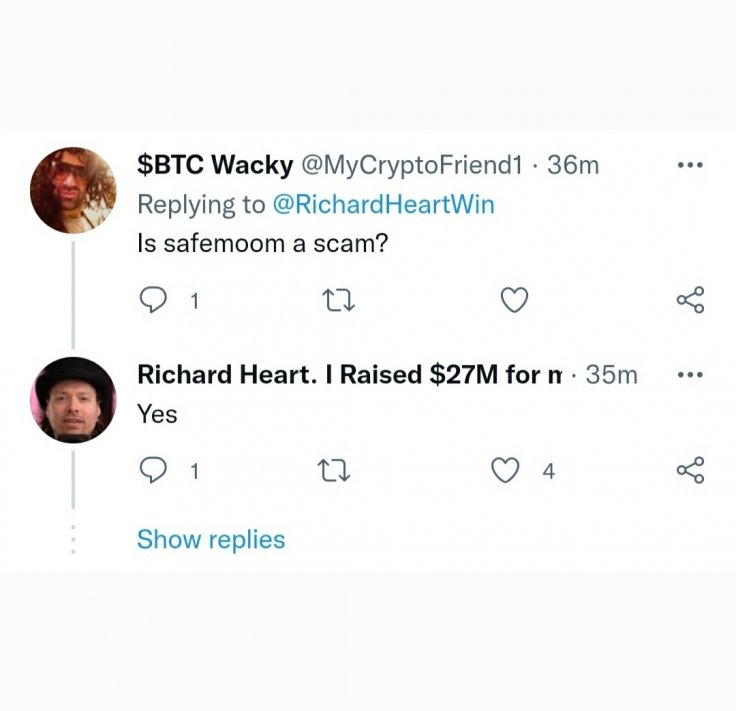Hex Coin founder Richard Heart reshared a tweet after the 'SafeMoon Wallet' debacle comparing SafeMoon to the ponzi scheme 'Powh Coin' that exploited investors' money and eventually shut shop in 2018.
Heart showcased that SafeMoon's business model is similar to Powh Coin where both highlight their flat 10% fee for every trade and split the fee between all currently held tokens.

Heart spoke exclusively to The International Business Times saying: ''If a cryptocurrency charges you a 10% fee on every transaction that you send isn't a cryptocurrency, it's a ponzi scheme,'' and continued, ''In the case of SafeMoon, the coin is a copy of Powh Coin, which was a ponzi scheme launched in 2017. Both SafeMoon and Powh Coin are the same things.''
Also, when a user questioned Richard asking on his Twitter thread, ''Is SafeMoon a scam?'', the Hex Coin founder replied with a ''Yes''.

Heart warned investors to be careful with their money by hinting that SafeMoon is nothing but a mirror reflection of Powh Coin. ''Copies of failed 2017 ponzis are being listed and promoted. #SAFEMOONARMY #Safemoon $safemoon @safemoon $safe,'' he tweeted. He also posted snapshots of SafeMoon and Powh Coin's business model which looks like a photocopy of each other.
What Is Powh Coin? Let's Walk Down The Nightmarish Memory Lane
For the uninitiated, Powh Coin was a ponzi scheme and the developers advertised it as a legitimate pyramid scheme all over social media. Surprisingly, Powh's value grew to over a million dollars and over a thousand Ethereum's. As days passed all the Ethereum's vanished and was secretly sent to 'second accounts'.
The developers also kept a loophole during the implementation of ERC-20 that allowed a person to 'approve' another users transactions and eventually, unidentified persons swallowed all of the investors money by 'approving' it on their behalf and siphoned it to their accounts.
The code worked in such a way that an unidentified user 'approved' the 'sell' transaction of an investor without his/her notice. Then created a second account after the 'sell' was made, making all the money fall into the second account and not to the investors' account.
The malicious second account would then withdraw all the money (extremely large amounts) and disappear without a trace leaving the investors' portfolio empty. The coin vanished in 2018 after draining out all the money and left investors high and dry with nothing but screenshots of their assets.
This is just one among the handful of stories related to fraudulent activities that occurred in the cryptocurrency market and investors' need to be extremely alert before placing their hard-earned money on coins that seem to be promising.








